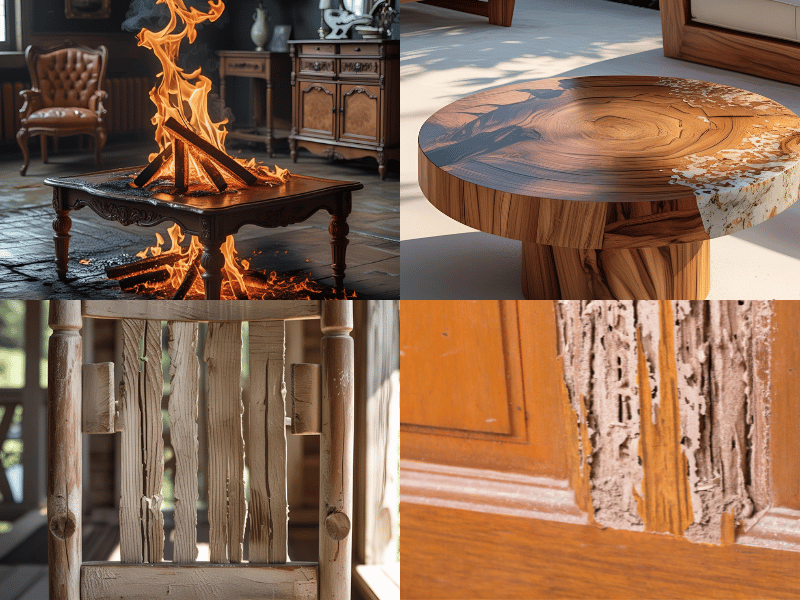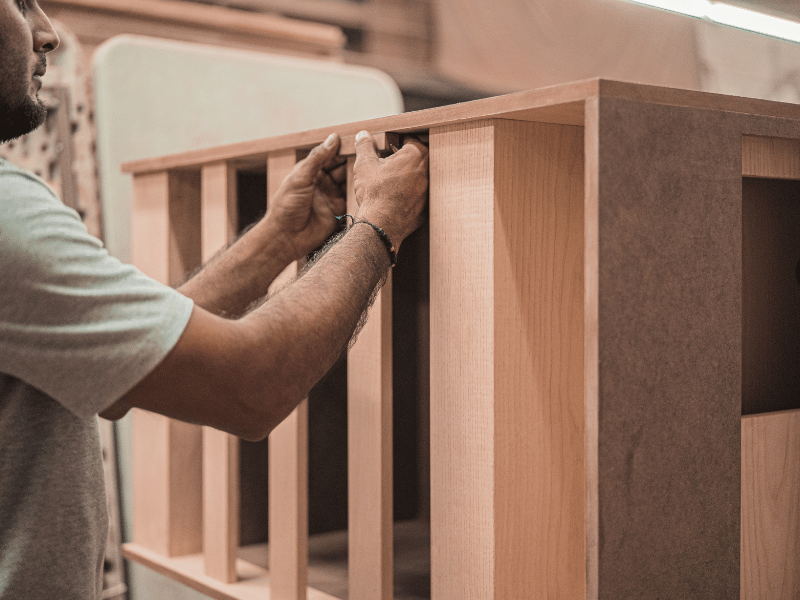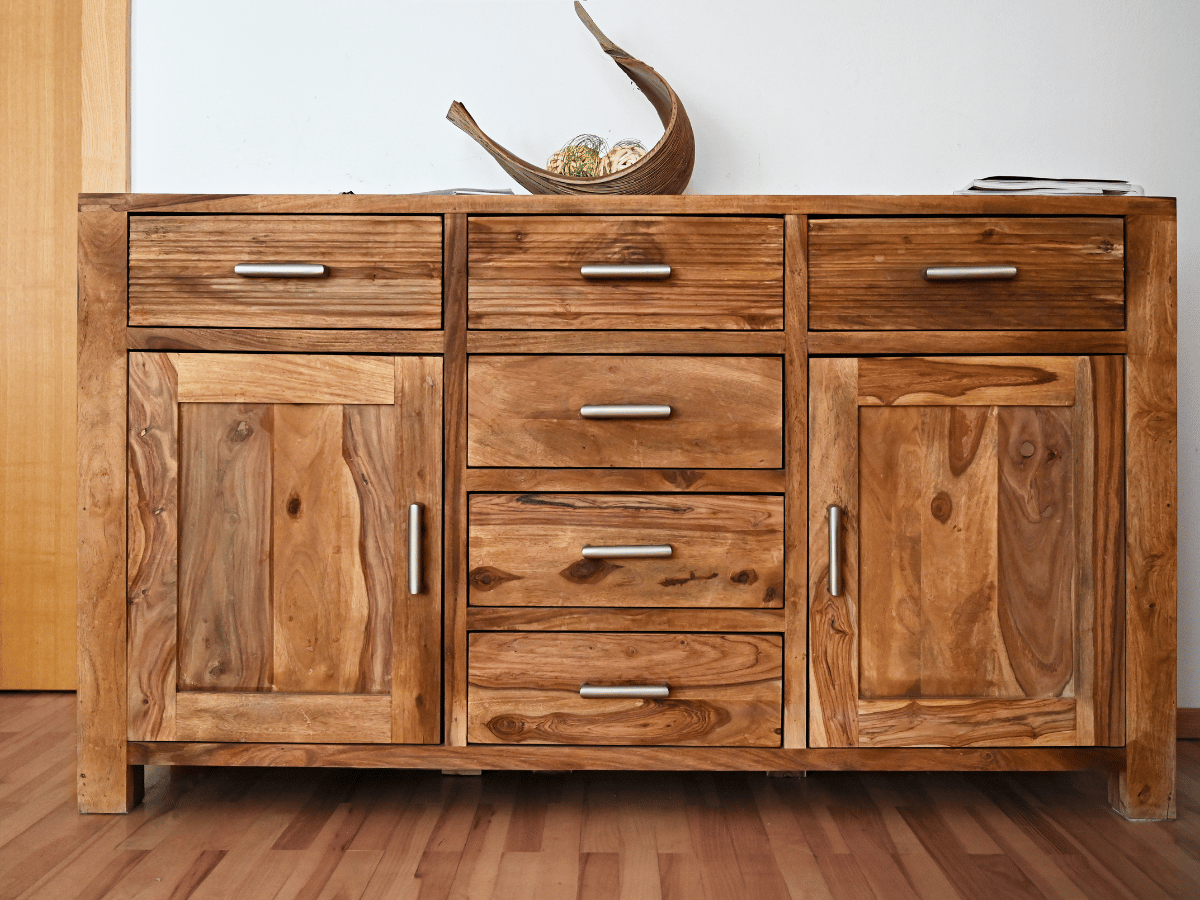Indian households treasure wooden pieces for their warmth, character, and longevity. Yet those very qualities suffer when wood meets the country’s famous monsoon and its ever-shifting climate. A single season of relentless rain can undo years of care, leaving swollen shutters and mould-stained cabinets scattered throughout a home. Effective waterproofing for wood is, therefore, an essential routine, not a luxury.
This guide explains every practical step, shows how materials differ, and outlines a maintenance schedule that suits India’s unique conditions.
Why Waterproofing Wood Furniture Is Essential
The wood soaks up water, as its cells contain endless fine capillaries. The moisture enters as the humidity increases, the fibres swell, and the joints lose their hold. This movement finds lead to warped panels, sticky drawers, and cracked polish-a state where wood must have waterproofing. When regularly applied wood waterproofing keeps away liquid and even blocks fungal spores from the surface. Untreated wood, therefore:
- Warps and swells with monsoonal humidity
- Cracks and shrinks when dry with high-temperature spells
- Attracts the colour, as UV-rays fade away, natural oils
- Invites wayward ants and borers that love moist timber
Wood waterproofing, when done properly, protects the wood from all these problems. Waterproofing makes the surface repel liquid and slow colour loss, not to mention denying insects the wet ambience they yearn for. Even better, the protected finish is the easiest to dust and polish, helping furniture to age with grace instead of with a flair. That’s why it’s wise to combine it with quality wood finishes products for longer-lasting results.
Common Weathering Agents That Affect Wooden Furniture

The common weathering elements affecting a wooden furniture piece are:
1. Heavy and fine rains saturate the exposed grains, specifically the end-grain and joints.
2. Strong sunlight bleaches the pigment and also degrades resin binders, resulting in a brittle and flaky surface.
3. Sudden temperature swings force timber to expand and contract, opening hairline gaps that trap moisture.
4. Pollutants settling as fine dust nourish mildew by collecting moisture upon panels.
5. Wood-boring insects detect and dig into deep tunnels within a piece of furniture, using dampness to hollow it out.
What Is the Difference Between A Wood Sealer And A Waterproofer?
Feature | Wood Sealer | Wood Waterproofer |
Function | Closes the pores of the wood | Forms a layer that blocks water completely |
Appearance | Usually clear, keeps the natural grain visible | May add a slight gloss or tint |
Ideal for | Indoor furniture and low-moisture areas | Outdoor furniture or damp areas |
Protection Level | Moderate | High |
A wood sealer closes microscopic pores, limiting stains and minor spills. A dedicated wood waterproofer goes further, forming a flexible shell that withstands driving rain or constant splashes. Choosing the correct product ensures long-term savings in effort and money.
How To Make Wood Waterproof: Tips And Methods
Surface preparation decides whether any coating fails or flourishes. Begin by washing or vacuuming away dust, then allow for a full day of drying time. Once the timber feels dry and smooth, choose one or more of the following methods to master how to make wood waterproof with confidence.
Use Of Waterproof Primers And Sealers
A waterproof primer contains resins that anchor to bare fibres, level the colour, and improve adhesion. After the primer sets, add a matching clear sealer. Two thin coats outperform a single thick one because each layer cures through to its core. Primed and sealed cupboards resist kitchen steam, and sealed tabletops shrug off water rings.
Always pay special attention to corners and underneath edges, where neglected drips often start to rot. A balanced primer-and-sealer system is the fastest route to subtle protection that does not hide attractive grain.
Application Of Waterproof Paint For Wood
Where appearance and endurance receive equal weight, specialised coatings shine. Modern waterproof paint for wood utilises elastic polymers that stretch and compress with the grain, rather than cracking. The following guidelines simplify selection:
- Exterior waterproof wood paint is blended for coastal wind, dust, and ultraviolet rays.
- Waterproof paint for wooden doors contains scuff-resistant additives, perfect for entrances.
- Waterproof paint for wood outdoors retains colour despite blazing sun, making it ideal for pergolas and balcony planters.
Apply thin coats along the grain, allowing them to cure completely. Then, lightly sand between coats for a satin smoothness that water cannot penetrate.
Protecting Wooden Doors And Floors
Door edges and flooring panels endure shoes, spills, and cleaning solutions. Better protection begins long before the varnish is applied.
1. Seal all door edges, including lock housings, before hanging the slab.
2. Select a waterproof primer for wood formulated for high traffic.
3. Finish with tough polyurethane or waterproof paint for wood outdoors, depending on the décor.
4. Place felt pads under furniture legs to prevent gouging and preserve the protective film on waterproof wood floors.
The combination offers a wipe-clean sheen that withstands daily use without dulling quickly.
Best Practices For Outdoor Wood Furniture Waterproofing

Garden benches, swing seats, and veranda coffee tables face the full force of the elements. The following best practices ensure peace of mind through unpredictable weather.
- Choose marine-grade sealant. Products designed initially or for boats excel in resisting rain, salt air, and continuous UV exposure.
- Seal end-grains generously. Water enters fastest where annual rings are exposed, so brush extra product along cut ends.
- Elevate legs with rubber glides to prevent puddles from reaching the timber.
- Store cushions separately, allowing frames to dry fully between showers.
- Cover during the off-season with breathable yet water-shedding fabric.
Manufacturers label suitable products outdoor wood furniture waterproofing” or “waterproofing for outdoor wood furniture”, simplifying shelf decisions.
Coating And Maintenance Tips
Regular attention extends life far beyond any single coating session.
1. Wash down dirt every quarter with mild soap and a soft brush.
2. Inspect joints for peeling; sand tiny blisters before they widen.
3. Re-coat annually in high rainfall zones and biennially elsewhere.
4. Tighten loose screws to prevent movement that can cause cracks in hard films.
Consistent habits keep wood furniture waterproofing intact and looking fresh.
How To Protect Wood From Water Damage
Not every defence relies on chemicals. Practical housekeeping forms the first safety net.
- Direct sprinkler heads away from siding and patio chairs.
- Clear balcony drains to prevent water from pooling under rocker bases.
- Ventilate bathrooms and kitchens with exhaust fans or open clerestory louvres.
- Use trivets and coasters to stop moisture rings.
- Place potted plants on plastic stands rather than tabletops.
Simple measures can drastically reduce the need for emergency repairs and teach family members how to protect wood from water damage in their daily routines.
Waterproofing Wooden Furniture In Bathrooms And High-Moisture Areas
Bathrooms combine steam, standing water, and cleaning agents in one confined space. Timber survives only when thoughtful design meets rigorous sealing.
1. Select hardwood or marine-grade plywood, which is naturally more resistant to swelling.
2. Treat every surface, visible or hidden, with a compatible sealer.
3. Choose finishes marketed as waterproofing wood in the bathroom for optimal mould resistance.
4. Position cupboards a short distance from shower doors and add a silicone bead along wall joins.
A sealed cabinet performs admirably in warm, humid air, especially when an exhaust fan keeps humidity under sixty per cent.
Recommended Surface Preparation Steps
Careful preparation ensures coatings bond seamlessly:
1. Sand lightly with 220-grit paper, removing glaze and fibres raised by moisture.
2. Vacuum dust from corners and pores.
3. Apply waterproof primer paint for wood evenly along grain lines.
4. Seal end-grains immediately after the primer flashes off.
5. Brush or spray the chosen finish in thin layers, allowing the finish to cure completely between coats.
6. Inspect under bright light for missed spots, then apply a final film to guarantee continuous coverage.
Following each stage methodically transforms the question how do you make wood waterproof into an easy, repeatable routine.


